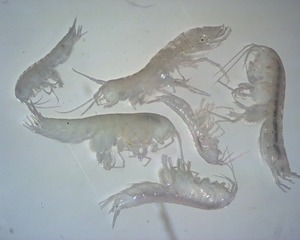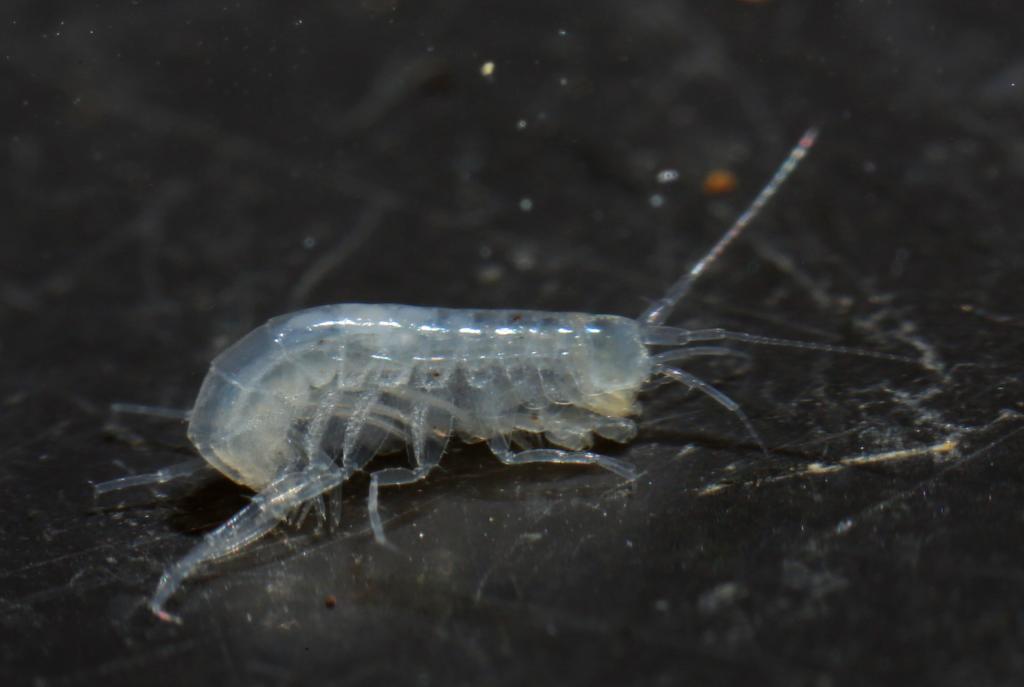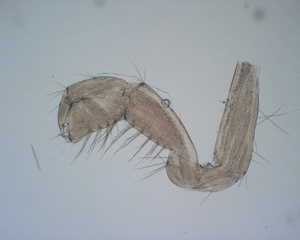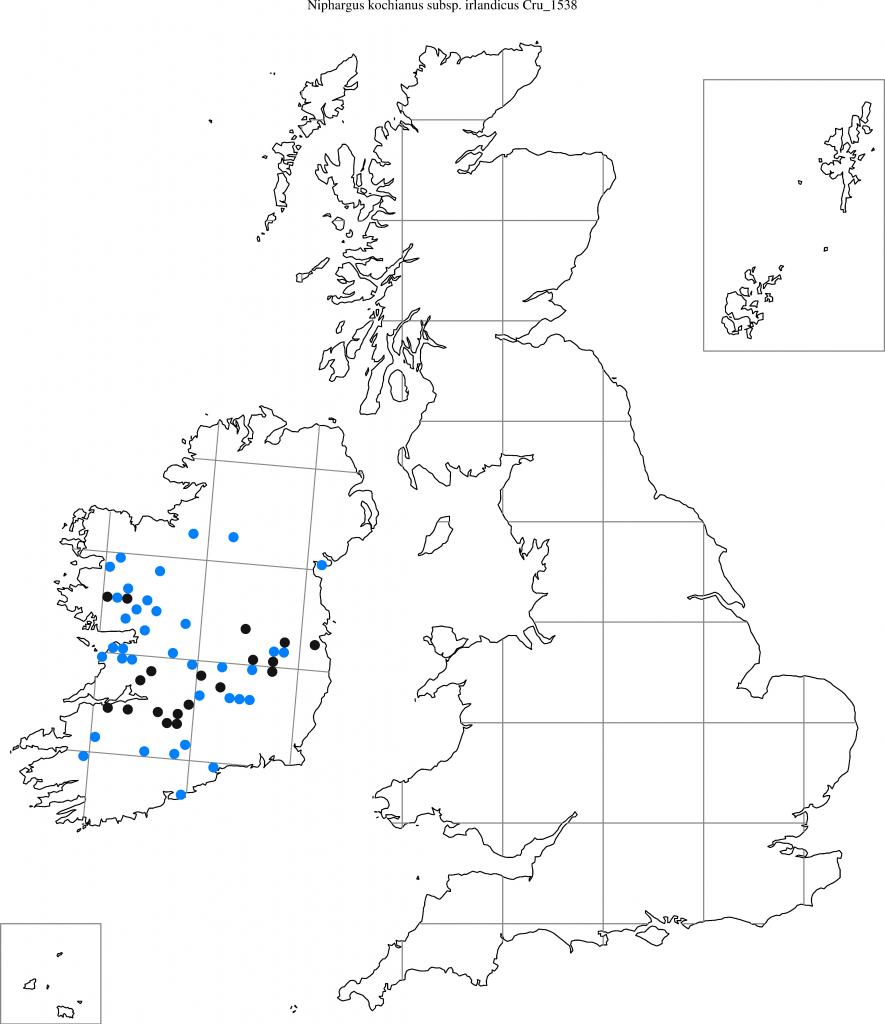
The first Irish niphargid record was from Dublin in 1863 by Professor Kinahan, in an old well sunk in limestone. A second record, in 1899 from a well at Templeogue, Dublin was identified as Niphargus kochianus. Schellenberg (1932) differentiated the Irish specimens as a separate sub-species (Niphargus kochianus irlandicus), which was upheld by Stock and Gledhill (1977). Although the former sub-species N. kochianus kochianus and N. kochianus irlandicus are morphologically very similar [Stock and Gledhill (1977) proposed the retention of sub-specific status for both] the two have been separated from each other by the Irish Sea for at least 10000 years and share no genetic continuity. Recent DNA analysis (Hänfling et al. 2008; Arnscheidt et al. 2012; McInerney et al. 2014) has shown that they are not in fact related and that they last shared a common ancestor some 23 million years ago. It would appear that N. kochianus irlandicus is more related to N. glenniei than N. kochianus kochianus. On the basis of this work Niphargus kochianus irlandicus and Niphargus kochianus kochianus were both elevated to species rank (cf. Niphargus irlandicus and Niphargus kochianus). It would appear that morphology is not always the best method for taxa separation and highlights the importance of DNA studies in discovering “cryptic” species within subterranean ecosystems.
The key diagnostic features for identifying Niphargus irlandicus are described in the section on Niphargus kochianus (note distinct triangular shape of the propodus (1st segment) and elongated carpus (2nd segment) of gnathopod 2 in the photo below). The two share a similar scarcity of male specimens within populations and a similar size range. Stock & Gledhill (1977) list males as averaging 4 to 4.5mm and females as 4 to 5.5mm (although mention is made of a larger specimen up to 6mm).
Niphargus irlandicus, along with Niphargus wexfordensis , are endemic to Ireland and are the only two species of Niphargus currently known to be present. N. irlandicus has been recorded from numerous localities across southern and central Ireland, extending from County Kerry and County Cork in the south, as far north as the Dundalk Peninsula (County Louth) on the east coast, the southern border of County Fermanagh and the Carrowmore cave system on the high plateau above the village of Geevagh (County Sligo) in the west. These latter three records are the most northerly for the genus Niphargus in Europe. Arnscheidt et al . (2008; 2012) and Knight & Penk (2010) found it to be by the far the commonest of the three species of niphargid in Ireland. Unlike most other British niphargids, most of these records are within areas fully glaciated during the Midlandian. Costello (1993) suggests that it might be a pre-glacial relict species, having survived beneath the ice in sub-glacial refugia. Arnscheidt et al . (2012) proposed the geothermal refuge hypothesis: geothermally heated waters and springs provided habitats for the Irish niphargids beneath the ice sheets. They also suggested that the northern limit of its distribution was governed by a series of poorly productive aquifers extending north of a line from Dundalk to Sligo, the strata of which provided limited space for habitat and potential dispersal routes. Habitats that N. irlandicus has been recorded from include springs, wells, riverine gravels and caves, the latter mostly in County Clare. It has also been recorded in the bottom sediments of Lough Mask. Both Schellenberg (1932) and Stock and Gledhill (1977) noted slight morphological differences between specimens from Lough Mask and those from caves and wells, although these were not thought sufficient enough to form the basis of a new taxon. However, in light of the recent studies separating N. irlandicus from N. kochianus , some new research into this subject is required. In a recent study of the phylogenetics and phylogeography of N. irlandicus , Arnscheidt et al . (2012) identified three distinct clades in Ireland, which seemed to occupy separate regions. The largest group, lineage 1 was present in the northern counties [Mayo, Galway, Clare, Kildare, Louth and Fermanagh]; lineage 2 comprised a single population in Co. Tipperary; and lineage 3 comprised populations in the southern counties of Waterford, Clare and Cork. There appeared to be some cross-over of lineages in Co. Clare with individuals present from both lineages 1 and 3. Recent surveys of the Irish hypogean Crustacea were carried out in the period 2006 to 2010 by a team headed by Joerg Arnscheidt at the University of Ulster and Knight & Penk (2010).


